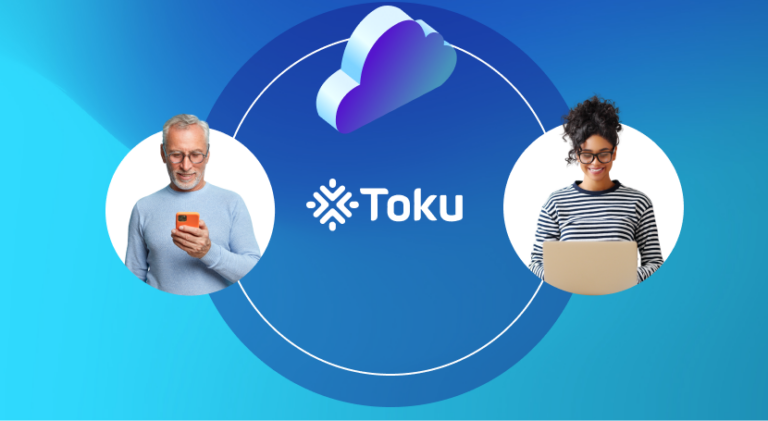Explore the complexities of the global SMS landscape and the importance of choosing a reliable partner for robust connectivity.
In today’s digital age it may be tempting to think that old technology is redundant. When it comes to PBX telephony, that couldn’t be further from the truth.
This article will explain why PBX is still important for modern businesses and how it can be integrated with newer technology to add serious value to a company’s operations.
What is PBX?
A Private Branch Exchange (PBX) is a switch that handles telephone calls to and from a single location, and is separate from the main telephone network for the area. A PBX is owned and controlled by a private business, as opposed to a telephone network provider.
PBXs became popular in the second half of the twentieth century, especially for medium to large size businesses that made and received a large volume of telephone calls. Instead of the telephone traffic putting pressure on the main switch for the local area, a PBX would be installed to act as a separate, smaller switch to handle business calls.
How do PBXes work?
Without getting too technical, let’s look at a basic PBX setup and how it operates.
Firstly, a copper telephone line, connected to the main national network, enters the company premises. This line is connected to a PBX box. Inside the box is a set of switches that allows calls to be made and received from various phones throughout the building internally, and grants access to a small number of outside lines for external calls (also known as trunk lines).
PBX networks range in size from a small PBX switch that is the size of a shoebox, handling just a few lines in a small office building to a large PBX that interconnects dozens of offices across a large campus.
Regardless of size, PBXes all serve the same purpose: they route internal and external telephone calls, thus preventing overload of the public switched telephone network (PSTN).
Features of PBX
PBX setups and equipment vary depending on the type, size and complexity of the network.
For instance, a PBX setup for a small accounting firm with three small offices would look very different from a PBX used across a university campus, and would include different features.
In general, a basic, modern PBX network would include the following features:
- Trunk – multiple phone lines, terminating at the PBX switch.
- Switch box or PBX switchboard – the main control centre of the PBX which houses the switching and indicator apparatus.
- Control CPU – using a computer with internal memory, the controller manages call switching to make and receive calls through the PBX. The computer may have a telephony application server installed on it.
- Uninterruptible power supply (UPS) – to prevent phone lines from going down in a power outage.
- Other equipment – various cables, cabinets, and other infrastructure to connect the PBX to offices.
However, in recent years, PBX networks have evolved to blend with modern communication technology. Let’s take a look at how PBXes are still relevant in the twenty-first century.
Modern PBX systems
A common misconception is that PBX networks are outdated technology, but this simply isn’t true.
Since the start of the digital revolution, PBX systems have begun to integrate with the internet and a new type of PBX has emerged known as IP (Internet Protocol) PBX.
IP PBXes still connect PSTN phone lines to internal extensions, but they also integrate with broadband internet connections. This allows access to several new communication features including:
- VoIP – Standing for Voice over Internet Protocol, VoIP bypasses the need for PSTN lines by using IP stations and IP trunks. SIP Trunking is the standard system used to enable VoIP through IP PBXes.
- Remote connection – Due to the fact that IP PBXes are connected to the internet, it allows remote workers to set up a remote IP extension and access business phone networks and calling plans remotely.
- Tele-conferencing – Multi-party tele-conferencing.
- Voicemail – IP PBX enables voicemail as standard. Some IP PBXes allow voicemail messages to be automatically forwarded to email addresses.
- Analytics – The digital nature of IP PBX systems means that you can track and record call data and generate reports or insights more easily.
- Cloud telephony – IP PBXes allows businesses to connect their communications to the cloud, which is accessible from anywhere.
Cloud PBXes are a further evolution of IP PBXes. The main difference is that the controlling software and data is all hosted and stored in the cloud rather than locally.
Business benefits of cloud PBX and cloud telephony
Cloud telephony is a Unified Communications as a Service (UCaaS) system that uses a cloud hosting service to handle voice calls.
When combined with IP PBX technology it enables calls to be made and received through the standard PSTN phone system.
More and more businesses are moving towards a cloud PBX and cloud telephony model as there are several business benefits.
- Reduced Cost – Cloud telephony providers take care of all the hosting and management of the voice communication system, usually offering either subscription or pay-per-use pricing which is cheaper than traditional telephone calling plans. There are also on-premise infrastructure savings as there is no longer a need for extensive wiring and cables. Finally, software upgrades and maintenance can all be done remotely and with little to no downtime which also saves money.
- Remote Usage – Employees that have a cloud-based virtual telephone number can make and receive calls from any location. All they need is an internet connection and a login for the cloud calling system.
- Reliability – On-site PBXes are more prone to failure or patchy connections than cloud PBX. Cloud telephony can help to improve business continuity.
- Enhanced Analytics – Cloud UCaaS software systems or apps usually come with built-in data tracking and reporting, which can generate valuable business insights.
A popular option these days is a hybrid VoIP system that combines both an on-premise IP PBX system with a cloud-based provider. This can be done by implementing an API to a business’ existing PBX system that connects it with cloud platforms and business apps such as MS Teams.
PBX and cloud – a powerful combo
Most companies and government organisations are in the process of digital transformation these days.
One of their main objectives is Unified Communications and the best way to achieve this is through cloud migration.
However, PBX still has a lot to offer and it’s often best to combine traditional systems with cutting-edge technology for the best results.
 Girish Dharmaraj
Girish Dharmaraj 


 Benson Chan
Benson Chan 
 Ana Castrillon
Ana Castrillon 
 V K Sanjeed
V K Sanjeed